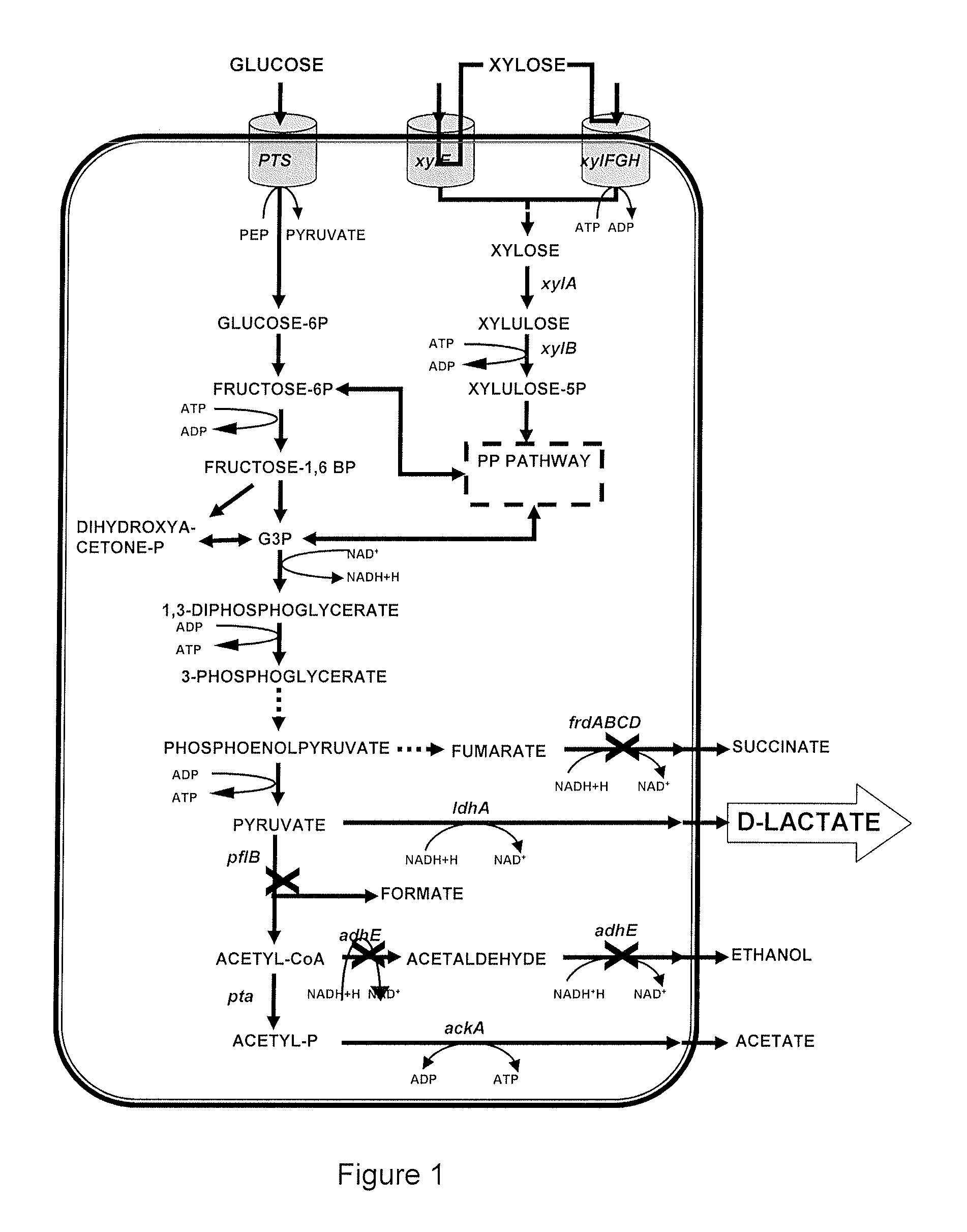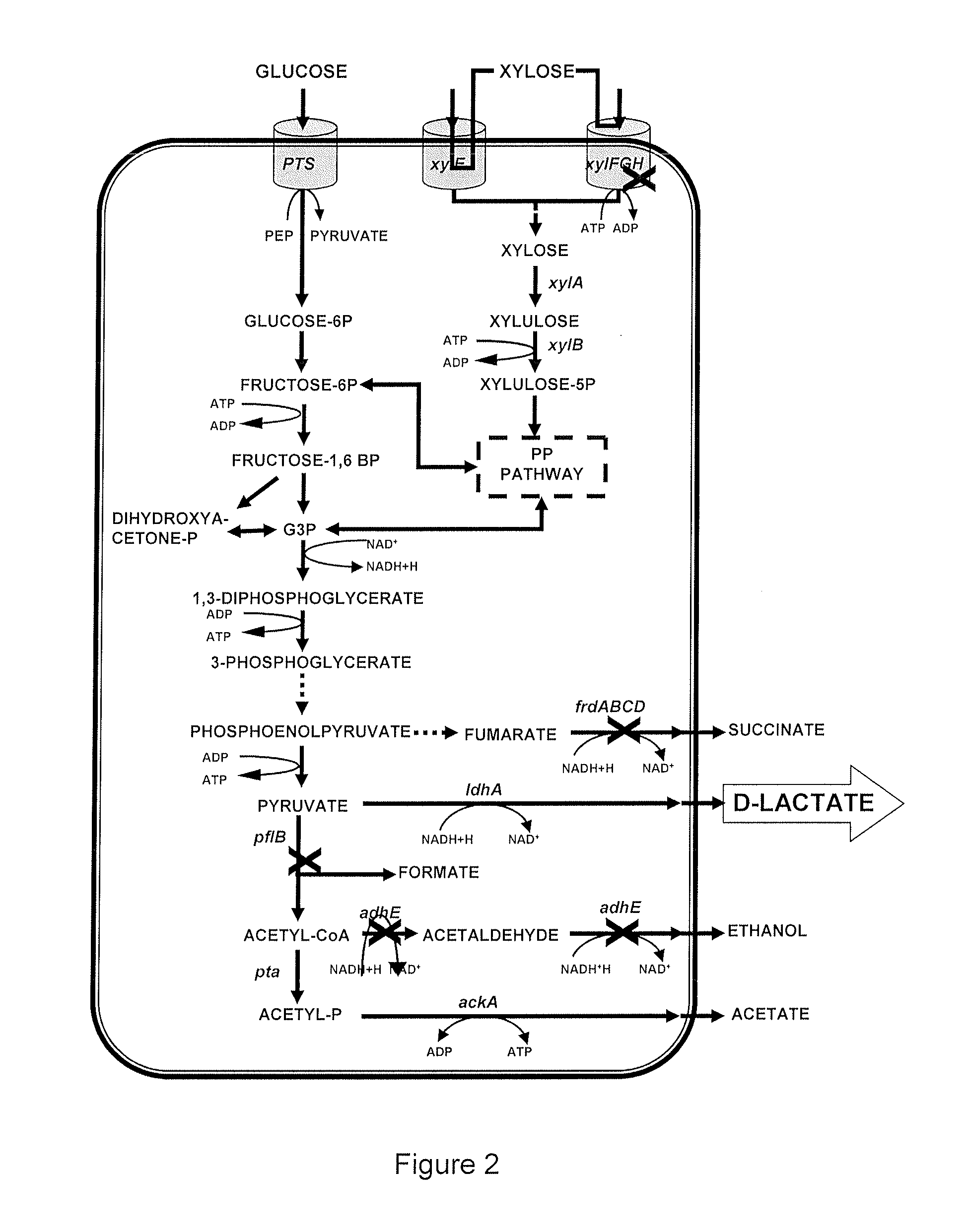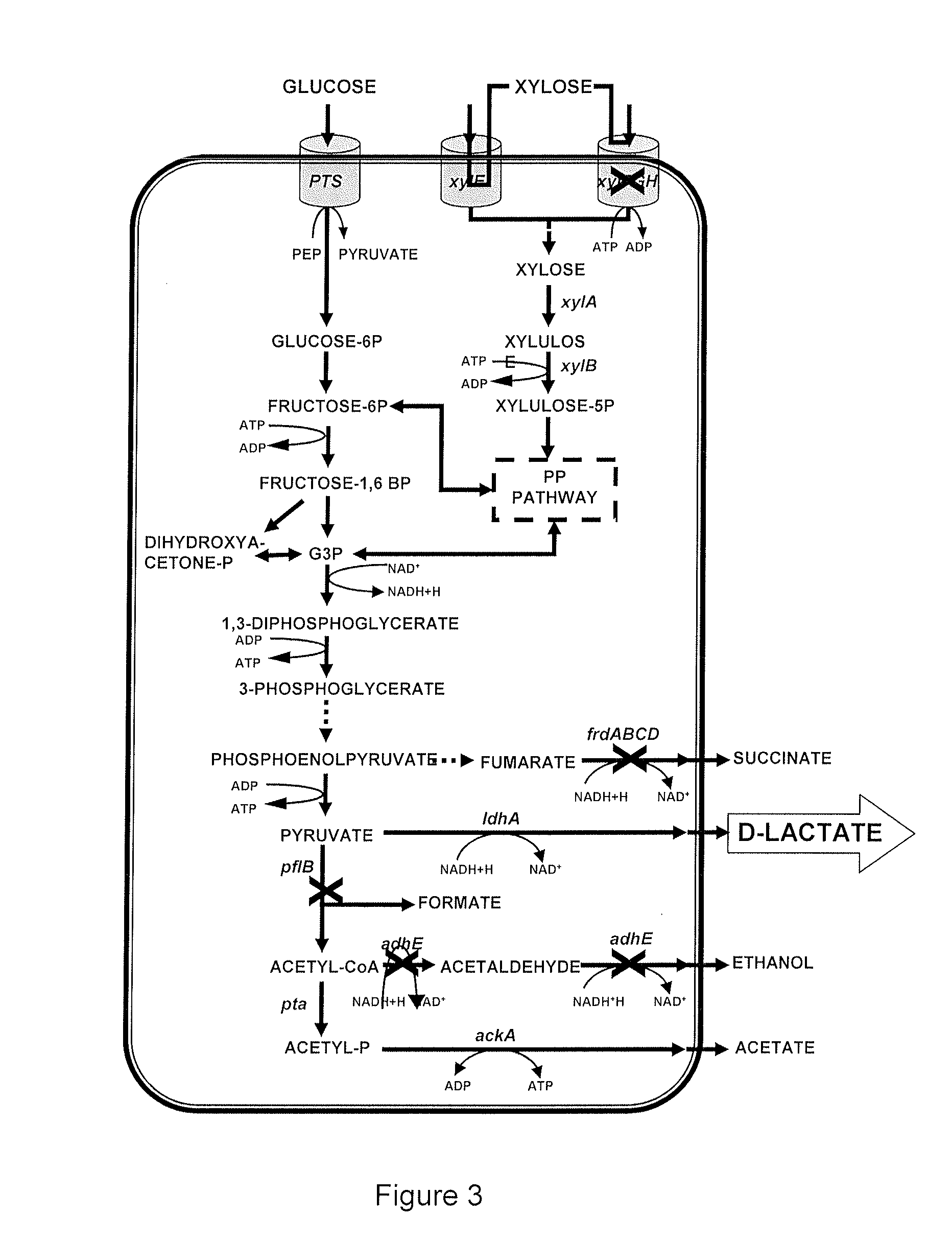Strains of escherichia coli modified by metabolic engineering to produce chemical compounds from hydrolyzed lignocellulose, pentoses, hexoses and other carbon sources
a technology of escherichia coli and metabolic engineering, which is applied in the field of new escherichia coli strains, can solve the problems of less sustainable production process, limited sugars that z. mobilis /i>can metabolize, and human carcinogenicity
- Summary
- Abstract
- Description
- Claims
- Application Information
AI Technical Summary
Problems solved by technology
Method used
Image
Examples
example 1
pflB Gene Suppression
[0110]As the first part of the present invention, the gene pflB of the E. coli strain MG1655 was suppressed using the plasmid PKO3-pflB (Lara et al., 2006). The pflB suppression was verified with PCR (FIG. 4) using the parent strain as a control and another mutant strain of E. coli, ΔpflB W3110.
[0111]The expected PCR product in the mutants corresponds to 1.7 Kbp, or to 4.5 Kbp in false positives, which is the size corresponding to the amplification of the intact gene. From the analysis of different gels, 7 mutants were selected. From these strains, cultures were grown in test tubes in AM2 media with 10 g / L of glucose and at 37° C. to verify the fermentation products after 24 h (FIGS. 5 and 6).
[0112]The phenotype observed in the colonies that have pflB suppression was a noticeable decrease in the products that are obtained from a reaction catalyzed by pyruvate formate lyase, that is, formic and acetic acids and ethanol, with a concurrent substantial increase in t...
example 2
adhE Gene Suppression
[0113]To perform the adhE gene suppression, a PCR product with regions homologous to this gene was obtained with the Adh Forw primers (SEQ. ID NO: 1) and Adh Rev primers (SEQ. ID NO: 2), and the plasmid pKD4 was used as a template (Datsenko and Wanner 2000). The product was electroporated into cells induced with arabinose and with a co-plasmid (pKD46). Several colonies resistant to kanamycin were obtained and analyzed with PCR with the adhck forward and reverse primers (SEQ. ID NO: 3 and SEQ. ID NO: 4, respectively), which amplify a 3.0-Kbp product corresponding to the regions 200 by downstream and upstream plus the adhE (2.6-Kbp) gene. Following suppression, a 1.9-Kbp product, corresponding to the kanamycin-resistance cassette and the adjacent regions already mentioned, is obtained.
[0114]FIG. 7 shows the 1.9-Kbp fragment obtained by adhE gene suppression, which yielded the E. coli strain MG1655 ApflB AadhE that was labeled as CL1 in the present invention.
example 3
frd Gene Suppression
[0115]To carry out the frd gene suppression, a PCR product with regions homologous to target gene was obtained using the frd Forw and frd Rev primers (SEQ. ID NO: 5 and SEQ. ID NO: 6, respectively) and the plasmid pKD4 as a template (Datzenko and Wanner 2001). This product was electroporated into cells induced with arabinose and with the co-plasmid (pKD46). Several colonies resistant to kanamycin were obtained and analyzed with PCR with the frdck forward and reverse primers (SEQ. ID NO: 7 and SEQ. ID NO: 8, respectively), which amplify a 1.9-Kbp product that corresponds to regions 50 bp downstream and upstream, plus the frd gene (1.8-Kbp). Following suppression, a 1.6-Kbp product is obtained, corresponding to the kanamycin-resistance cassette and the adjacent regions already mentioned.
[0116]The E. coli strain obtained, which was resistant to kanamycin, was transformed with the pCP20 plasmid carrying the FLP recombinase gene. The latter was grown in petri dishes w...
PUM
| Property | Measurement | Unit |
|---|---|---|
| Temperature | aaaaa | aaaaa |
| Fraction | aaaaa | aaaaa |
| Density | aaaaa | aaaaa |
Abstract
Description
Claims
Application Information
 Login to View More
Login to View More - R&D
- Intellectual Property
- Life Sciences
- Materials
- Tech Scout
- Unparalleled Data Quality
- Higher Quality Content
- 60% Fewer Hallucinations
Browse by: Latest US Patents, China's latest patents, Technical Efficacy Thesaurus, Application Domain, Technology Topic, Popular Technical Reports.
© 2025 PatSnap. All rights reserved.Legal|Privacy policy|Modern Slavery Act Transparency Statement|Sitemap|About US| Contact US: help@patsnap.com



